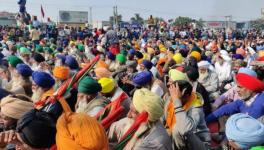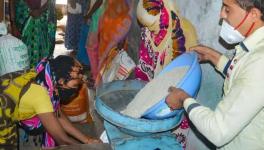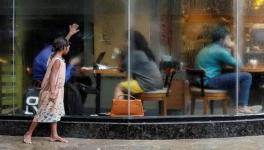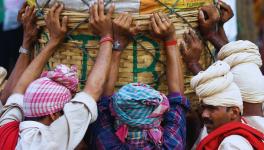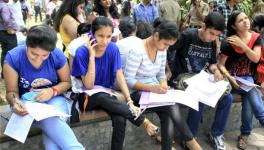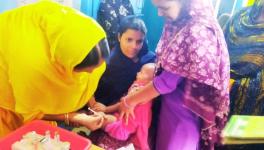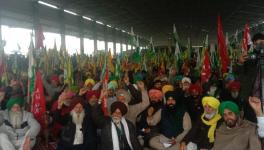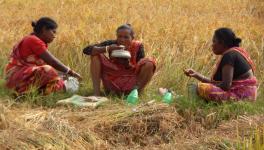Social Sector Given Short Shrift in Budget
Representational use only.
Finance Minister Nirmala Sitharaman’s budget has helped reinforce one home truth -- that India is divided into the salaried section and a vast underbelly, including the middle class who have been edged into poverty due to job losses suffered during the COVID pandemic.
Coming out of the pandemic’s ‘third wave’, issues of employment, health, education, women and children should have been the primary focus for the Finance Minister. Sadly, the Union Budget has seen the government ride roughshod over the poor and vulnerable sections, with social sectors witnessing major budgetary cuts.
The Right to Food Campaign, in its most recent survey across 6,000 households living in 12 states, conducted between December 2021 and January 7 2022, found the majority of families admitting they did not have to skip a meal because the free grain provided them a cushion.
Alleviation of hunger should be the first priority of any government. But what we are witnessing is a major cut in food subsidies.
Two years ago, we saw the government providing food subsidies under the National Food Security Act were Rs 2,10,929 crore in 2020-21, these are now down to Rs 1,45,920 crore in 2022-23.
Economist Dipa Sinha, who teaches at the Ambedkar University and is one of the lead campaigners of the Right to Food Campaign, said: “The government was planning to end the COVID- driven Pradhan Mantri Garib Kalyan Anna Yojana in December 2021 which covers 80 crore people, but keeping the Assembly elections in the five states in mind, the scheme was extended to March.”
“With no official poverty alleviation data available, we are now dependent on private organisations like the Centre for Monitoring Indian Economy. Families interviewed admitted that with little cash in hand, free grain ensured they were not starving. The question is: what will be their fate after March this year?’ asked Sinha.
The food subsidy allocation at Rs 2.06 lakh crore for 2022-23 is Rs 80,000 crore less than last year’s budgetary allocation made under the National Food Security Act. This is a clear indicator that the government wants to wrap up this scheme.
If the government is not in a position to provide food subsidy, the next best alternative would be to provide the public with avenues of employment.
Allocations for the National Rural Employment Guarantee Programme, a life saver for migrant workers right through the two years of the pandemic, have also been slashed from Rs 1,11,170 crore in 2020-21 to a new low of Rs 73,000 crore for 2022-23. The budgetary allocation does not take into account the bill for pending wages of Rs 21,000 crore for work that has been executed.
Nikhil Dey, social activist with the Mazdoor Kisan Shakti Sangathan, pointed out that PAEG (People’s Action for Employment Guarantee) had estimated that a minimum allocation of Rs 2,64,000 crore would be required to provide 100 days of work to the same number of households that had worked in 2021-21.
De said: “The government has shown its callousness and utter disregard for the rural poor and their livelihoods by allocating only 28% of what is required.”
“The government is squeezing NREGA so that it dies from strangulation. The only guarantee of employment in the country is being undermined. We fought for the law, now we will fight to protect the law,’ said De.
The health and nutrition sector has taken a hit. This is surprising given that even though the COVID ‘third wave’ is receding, we can hardly be described as being out of the woods.
The government has announced a slew of high-sounding schemes including digitisation of health services. It is to this effect that the government has allocated Rs 15,163.22 crore towards the National Digital Health Mission. But health experts ask whether digitisation of health services can replace tertiary healthcare at the primary and secondary levels.
Public health expert Dr K Srinath Reddy, president of the Public Health Foundation of India, pointed out: “While investment in healthcare infrastructure and digital health are needed and will improve access to health services, they will serve their purpose only when there is a multi-layered, multi-skilled healthy workforce which is well distributed across the whole country. The budget does not provide that. Primary health care is pivotal for an efficient, equitable and empathetic health system. The level of increase provided for the National Health Mission falls short of this need.’
The marginal increase for the outlay of the National Health Mission of Rs 37,000 crore against an allocation of Rs 34,447 crore in 2021-22 defies logic because this is the umbrella organisation that caters to the health needs of the vast majority of the Indians.
But the moot question being raised by Dr Reddy and other experts is what has been the fate of the 1.5 lakh health and wellness centres which the government had announced were to be built by the end of 2022. There is no clarity about how many have been built and whether they are adequately staffed with trained personnel.
At a time when malnutrition and hunger are on the rise, the Ministry of Women and Child Development has revealed that between March 2016 and March 2021, the beneficiary children receiving supplementary nutrition came down from 82.9 million to 67.5 million. During the same period, the number of children between three to six years receiving pre-school education had also declined by 34% from 34 million to 23 million.
But what will further worsen the plight of children has been the reduction by 30% on the purchase of grains from the Food Corporation of India. This will directly impact the crucial Integrated Child Development Scheme programme. The budget of the mid-day meal scheme has also been cut by Rs 1,267 crore.
It is obvious that the government wants to give closure to these schemes because despite government assurances, the 26 lakh anganwadi and ASHA workers have not seen any increase in their meagre remuneration. Similarly, the 25 lakh women and their helpers who are cooking the mid-day and who are being paid Rs 1,000 a month have not seen an increase in their honorarium.
The last three years have seen children being pushed beyond the margins. Their issues vary from the longest closure of schools, children headed households, under 5 mortality, loss of learning opportunities and a deep digital divide.
Shailabh Kumar, co-convenor, HAQ Centre For Child Rights, regrets that while the total allocations of welfare for children in the budget 2022-23 is Rs 92736-5 crore against an allocation of Rs 85,712 crore in the 2021-21. Although there is an increase by 8% in absolute terms for the overall budget, this is not in proportion to the increase in the budget.
Kumar is also mystified as to why the government is constantly renaming schemes or merging them with other programmes thereby making it difficult to evaluate what is their performance.
Kumar cites the example of the Beti Bacha0 Beti Padhao programme, which has been merged with the Mission Shakti, Sambhal and Samarthaya. The ICDS name was dubbed the Sankasham Anganwadi and POSHAN 2.0.
The Parliamentary Standing Committee on Empowerment of Women, headed by Heena Gavit, which looked at the implementation of the Beti Bachao Beti Padhao scheme, found that only 25% of the Rs 622 crore allocated for it had been spent in 2021-22.
The rise of child labour in the pandemic, as also an increase in child trafficking should have seen a greater emphasis on ensuring better child protection. This is not to be seen on the ground. In fact the budget for the National Child Labour Programme has been cut from Rs 120 crore to Rs 30 crore.
The Gender Budget has further shrunk this year with its share of the expenditure declining from 4.4% to 4.3% for financial year 2023. The Gender Budget has decreased from 0.71% of GDP to 0.66% in the estimates of 2022-23.
Activists are extremely critical of the cuts that have been imposed on the social sector in order to boost infrastructure spending in a bid to fasten the pace of economic recovery.
The `Amrit Kaal` of the next 25 years seems to be laden with a multitude of platitudes and promises but fails to address the issue of growing inequality. No development can take place if this fundamental issue is not addressed.
The writer is a freelance journalist. The views are personal.
Get the latest reports & analysis with people's perspective on Protests, movements & deep analytical videos, discussions of the current affairs in your Telegram app. Subscribe to NewsClick's Telegram channel & get Real-Time updates on stories, as they get published on our website.









